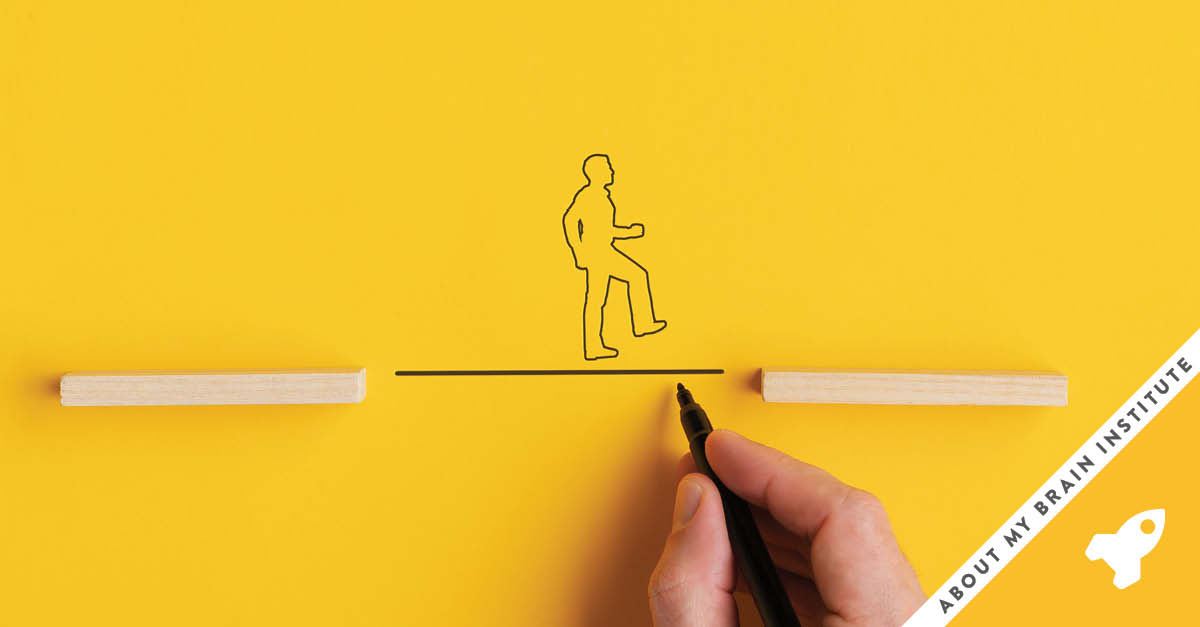Having The Courage To Fail And Then Try Again
It’s normal to feel like quitting or that you have failed. Everyone feels like that sometimes. Whether it pertains to large or small goals or experiences in life, we inevitably fail at some of them. However, we can either accept failure as a necessary step towards success or let failures dictate our futures. Failure is not the same thing as defeat unless we give up.
Successes and Failures Are Usually Grey Area
We rarely have total successes or failures in life--most of our endeavours are probably somewhere in the middle, leaning more towards failure or more towards success. Why do we so often see failure as such an absolute? Instead, we should think about failure as a step in the process and learn all we can from it. In many ways, a failure that eventually leads us to success was probably not a total failure in the first place.
The Courage to Admit Failure Can Be Hard to Find
It takes courage to admit when something you worked on doesn’t work out. All the people around you, those who you collaborate and work with, are watching you as the leader. When you accept a failure graciously and take it as an opportunity for growth, they are watching. If you instead throw a fit and stomp about and proclaim how unfair everything is, they are also watching.
When you hold a position of leadership, you have power. It doesn’t matter if you lead a company with thousands of employees or work in a small organisation. You can use this power to further your own growth (and that of others), or you can cling to each failure instead of moving on.
When we succeed or win at something, the brain releases dopamine. Eventually, if we continue to thrive, structures in the brain change to make us more competent and confident. Dubbed the ‘winner effect’ by biologists, most animals exhibit this behaviour. However, when we lose, we tend to do worse at a later time and are thrown off by our past mistakes.
In a study using monkeys, animals who made mistakes (even after eventually completing the task) were more likely to make mistakes later compared to the animals who didn’t make mistakes initially.[1] Having the courage to continue, even when we may be in a cycle of failure for some time, is one key feature of a neuroleader. Animals have learned it is worth trying again, so we can, also.
Various Parts of the Brain Are Activated When We Experience Failure
Failure activates several parts of the brain, including the prefrontal cortex, the anterior cingulate cortex, and the amygdala.
The Prefrontal Cortex
The prefrontal cortex, located at the front of the brain, is responsible for executive functions such as planning, working memory, and decision-making. When we experience failure, this brain area is activated as we try to process and make sense of our failure.
According to studies on the effects of stress on cognition during WWII, pilots who were incredibly skilled during peacetime experienced higher rates of crashes due to mental errors. Research showed that stress levels negatively altered performance when tasks required complex, agile thinking. When people felt less in control, these adverse effects were compounded. [2]
When we fail, the prefrontal cortex processes a great deal of information to try to understand why we failed and what we should do next. Unfortunately, the amount of stress we feel increases, which then causes us to be uncertain and may stall or completely stop our progress.
The Anterior Cingulate Cortex
This structure is located in the middle of the brain and is involved with emotion regulation and conflict monitoring. Activation occurs when we experience failure-related emotions, like frustration, embarrassment or disappointment.
Several studies have examined positive and negative feedback during learning tasks. We constantly process success or failure signals, and success is correlated with decreased activation in the anterior cingulate cortex. In other words, our brains are susceptible to success and failure signalling, and the brain learns to reduce activation in certain areas when things are going well.[3]
This means we have an opportunity to not just learn from the negative emotions but to support the successes and acknowledge positive changes are occurring. We need leaders who take the time to celebrate successes, even small ones, to promote and encourage courageous behaviour in the workplace.
The Amygdala
The amygdala is located deep within the brain and plays a vital role in processing emotions, especially those associated with ‘fight or flight’. Fear and anxiety can trigger the activation of the amygdala. The amygdala kicks in when we sense a threat (whether it is real or imagined).
In a study of an individual with lesions in the amygdala, researchers found the patient experienced no fear when exposed to a variety of things most people find scary. This patient had no response to spiders and snakes, haunted houses or horror movies. However, the patient still experienced other emotions.[4]
In people with typical brain function and structure, the amygdala can produce strong results in the face of failure. We feel the fear of something bad happening as a result of that failure. We typically either fight, meaning we lash out to protect ourselves, or freeze and become unable to proceed.
Learning the Value of Failure
When we fail, our brains undergo a complicated process to analyse the situation, regulate our emotions and then determine what we should do next. How we cope with failure depends on many factors, including mindset, past experiences and how supportive people are around us.
We must recognise the value of failure and what an incredible learning experience it can be. Learning to let go of the fear of success means we can continuously try new things and think outside of the box.
When Our Failures Seem to Be Broadcast to All
No matter our job or role in life, we may have moments where we feel as if all of our decisions (good or bad) are on public display. When we have to make difficult decisions, we may face the consequences of those choices. We often forget that many do not see our hundreds of successes, but it seems like everyone sees our failures.
Collaboration Gives Us the Courage to Fail
When we have strong collaboration between ourselves and those around us, they don’t just see the failures. They see all the successes and good things we do in day-to-day work and life. We can’t let ourselves dwell on the negatives but focus on what we can learn and then move on.
Collaboration can improve failure in several ways, including:
- Shared ownership. When part of a team, we all sink or swim together. Everyone involved in the project or task is invested and motivated to ensure success. When failure happens (which it inevitably will), one person does not fail alone; instead, the whole team has another opportunity to try again.
- Everyone learns from their mistakes. We want to create a culture of continuous improvement, so when we fail, we should take the time to examine what went wrong and where changes can be made. By working together, we all learn from our mistakes and can try to prevent similar mishaps in the future.
- Increased accountability. When we work alone, there is often a tremendous burden on our shoulders. However, when we work together, we support an entire team. We can hold each other accountable for our actions, which may prevent failures caused by individuals due to carelessness or oversight. When we work as a team, we can harness the best of each team member to produce the best results.
- Diverse perspectives. Collaboration brings together people with diverse backgrounds, educations and cultures. These different perspectives can help identify blind spots and potential problems. Looking at things from a different angle often means we see issues before they lead to failures.
- Sharing of skills and knowledge. Collaboration means we pool our collective talents, giving the group a more comprehensive range of resources than any individual member would possess. By combining strengths, teams may be better equipped to avoid failure in the first place.
Realising that more brains are smarter than one is important to become a brain-friendly leader. We should use all available resources instead of trying to accomplish everything alone. It takes courage to lean on your team and give them the autonomy to fulfil a company vision, but if we stifle this creativity, we are setting ourselves up for failure.
Brain-Friendly Leadership Requires Courage
While the idea of having our failures broadcast to the world is often cringe-worthy, we should instead see the opportunities we have to learn and improve. Failure and defeat are not the same things.
Admitting defeat means the process stops. We throw in the towel, and the project is over. Failure means acknowledging something that went wrong and looking again to see what we can learn from and improve. Then, we try to avoid making those same mistakes again.
If this is easier said than done to you, perhaps it’s time to reevaluate your leadership methods. Seeing the world differently and understanding how leadership is most effective is possible. Instead of letting the word failure bring us down, we should learn to articulate a new opportunity for learning and growth.
- i4 Neuroleader (353)
- Leadership & Culture (336)
- Brain Health & Wellbeing (206)
- Innovation (97)
- Performance (85)
- Our News (79)
- Collaboration (68)
- Agility (53)
- Practitioner Stories (44)
- In The Press (36)
- Make Me A Leader (33)
- Balance (31)
- Integration (30)
- Imagination (29)
- Awareness (23)
- Brain-Friendly Channel (22)
- Brain-Friendly Leadership (22)
- Communication (22)
- Curiosity (21)
- Inspiration (19)
- Intuition (19)
- Attitude (17)
- Courage (16)
- Adaptability (14)
- Case Studies (14)
- Drive (14)
- Generosity (13)
- Ethics (9)
- Mental Readiness (9)
- Influence (8)
- Retreat (8)
- Brain-Friendly Leadership (1)
- Oracle Cards (1)
- 1 November 2025 (2)
- 1 September 2025 (3)
- 1 August 2025 (5)
- 1 July 2025 (5)
- 1 June 2025 (2)
- 1 April 2025 (1)
- 1 March 2025 (8)
- 1 February 2025 (3)
- 1 September 2024 (4)
- 1 July 2024 (2)
- 1 June 2024 (6)
- 1 May 2024 (2)
- 1 April 2024 (3)
- 1 March 2024 (1)
- 1 November 2023 (1)
- 1 August 2023 (1)
- 1 July 2023 (2)
- 1 June 2023 (2)
- 1 May 2023 (4)
- 1 April 2023 (2)
- 1 March 2023 (7)
- 1 February 2023 (4)
- 1 January 2023 (1)
- 1 September 2022 (1)
- 1 May 2022 (3)
- 1 April 2022 (1)
- 1 March 2022 (5)
- 1 February 2022 (4)
- 1 January 2022 (4)
- 1 December 2021 (2)
- 1 November 2021 (4)
- 1 October 2021 (3)
- 1 September 2021 (6)
- 1 August 2021 (1)
- 1 April 2021 (1)
- 1 December 2020 (2)
- 1 November 2020 (1)
- 1 September 2020 (1)
- 1 August 2020 (1)
- 1 July 2020 (3)
- 1 June 2020 (4)
- 1 May 2020 (3)
- 1 April 2020 (4)
- 1 March 2020 (6)
- 1 February 2020 (4)
- 1 January 2020 (2)
- 1 December 2019 (3)
- 1 November 2019 (3)
- 1 October 2019 (5)
- 1 September 2019 (4)
- 1 August 2019 (4)
- 1 July 2019 (4)
- 1 June 2019 (5)
- 1 May 2019 (9)
- 1 April 2019 (9)
- 1 March 2019 (8)
- 1 February 2019 (7)
- 1 January 2019 (8)
- 1 December 2018 (5)
- 1 November 2018 (10)
- 1 October 2018 (16)
- 1 September 2018 (9)
- 1 August 2018 (10)
- 1 July 2018 (9)
- 1 June 2018 (8)
- 1 May 2018 (9)
- 1 April 2018 (9)
- 1 March 2018 (9)
- 1 February 2018 (8)
- 1 January 2018 (8)
- 1 December 2017 (6)
- 1 November 2017 (9)
- 1 October 2017 (9)
- 1 September 2017 (8)
- 1 August 2017 (10)
- 1 July 2017 (8)
- 1 June 2017 (8)
- 1 May 2017 (9)
- 1 April 2017 (8)
- 1 March 2017 (6)
- 1 January 2017 (3)
- 1 December 2016 (4)
- 1 November 2016 (5)
- 1 October 2016 (4)
- 1 September 2016 (2)
- 1 August 2016 (4)
- 1 July 2016 (4)
- 1 June 2016 (2)
- 1 May 2016 (3)
- 1 April 2016 (3)
- 1 March 2016 (7)
- 1 February 2016 (2)
- 1 January 2016 (5)
- 1 December 2015 (2)
- 1 November 2015 (2)
- 1 October 2015 (4)
- 1 September 2015 (2)
- 1 August 2015 (2)
- 1 July 2015 (1)
- 1 June 2015 (3)
- 1 May 2015 (4)
- 1 April 2015 (5)
- 1 March 2015 (3)
- 1 February 2015 (3)
- 1 January 2015 (3)
- 1 December 2014 (3)
- 1 November 2014 (3)
- 1 October 2014 (3)
- 1 September 2014 (5)
- 1 August 2014 (4)
- 1 July 2014 (5)
- 1 June 2014 (3)
- 1 May 2014 (1)
- 1 March 2014 (1)
- 1 December 2013 (2)
- 1 November 2013 (1)
- 1 July 2013 (1)
- 1 June 2013 (1)
- 1 May 2013 (3)
- 1 April 2013 (1)
- 1 March 2013 (2)
- 1 February 2013 (1)
- 1 January 2013 (2)
- 1 November 2012 (1)
- 1 October 2012 (1)
- 1 September 2012 (1)
- 1 August 2012 (2)
- 1 July 2012 (1)
- 1 June 2012 (1)
- 1 May 2012 (2)
- 1 April 2012 (1)
- 1 February 2012 (1)
- 1 January 2012 (1)
- 1 November 2011 (1)
- 1 October 2011 (3)
- 1 September 2011 (2)
- 1 July 2011 (1)
- 1 June 2011 (1)
- 1 May 2011 (1)
- 1 April 2011 (1)
- 1 March 2011 (1)
- 1 February 2011 (2)
- 1 January 2011 (4)
- 1 December 2010 (4)
- 1 November 2010 (3)
- 1 October 2010 (5)
- 1 September 2010 (4)
- 1 August 2010 (4)
- 1 July 2010 (3)
- 1 June 2010 (4)
- 1 May 2010 (7)
- 1 April 2010 (5)
Subscribe by email
You May Also Like
These Related Stories

Courage – A Business Essential In Our Brave New World

5 Ways To Improve Your Negotiation Skills



No Comments Yet
Let us know what you think